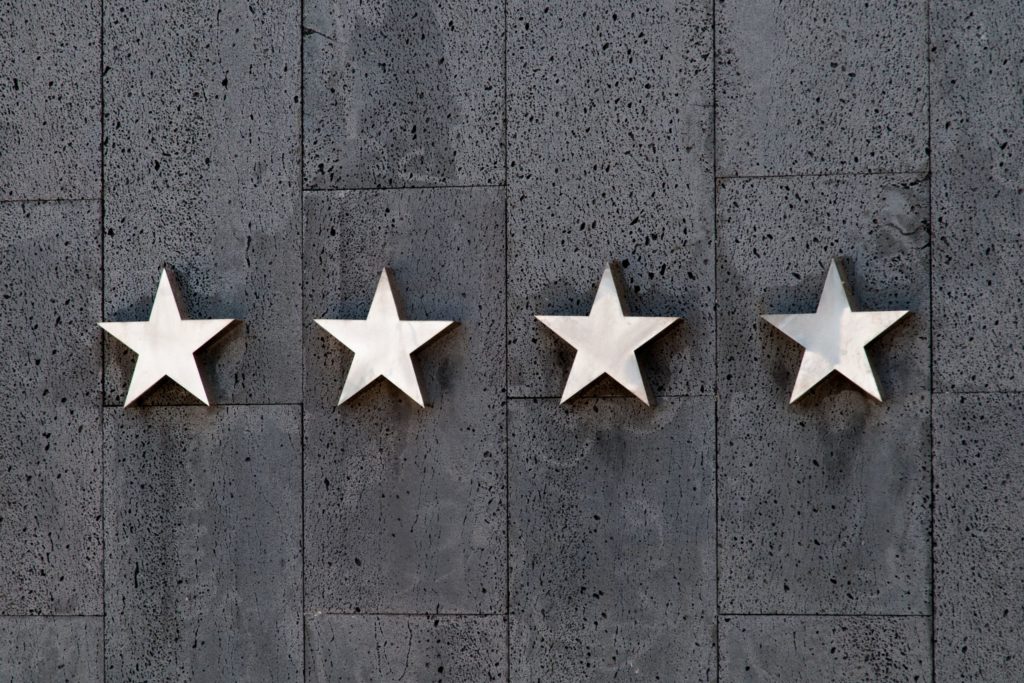The voiceover industry is booming, thanks in part to a 42% increase in audiobook consumption in 2020 and a forecasted 21% growth in eLearning (valued around $250 billion in 2020). Voiceovers sound off across video marketing, advertisements, voice assistants, corporate training content, and more. A high-quality voiceover leads to more sales, a more professional brand image, and more memorable marketing materials. But technology is changing quickly and voiceovers must keep up to be heard and be effective.
In this blog post, learn the myriad channels voiceovers appear in, the essential elements of a high-quality voiceover, who makes voiceovers in today’s marketing landscape, and how voiceovers are recorded—from traditional methods to the latest technology.
What is voiceover used for?
A voiceover is a technique in which a voice is recorded to narrate a story or share information. With voiceovers, the person speaking is not seen—only heard. Voiceovers are often (but not always) an addition to what the viewers see on a screen, and are used to describe, explain, highlight, or provide additional context or information.
There are two main types of voiceovers: narration and non-narration. In narration, the voiceover describes the actions the viewer sees and tells a story based on what’s happening. In non-narration, the voiceovers are intended to instruct, educate, or inform.
Some of the most common uses of voiceovers include:
- Learning and development content
- Advertisements
- Online marketing videos
- Educational content
- Apps
- Audiobooks
- Video games
- Documentaries
- Training videos
- News reports
- Promotional movie trailers
- Radio ads
- Podcast ads
What are the essential elements of a quality voiceover?
Great audio is not just important—it’s essential to keep your audience engaged and achieve your content’s purpose. Video users are more likely to stop watching a video, or to assume a brand is lower quality, if the audio is poor. Whether you’re making a narrative or non-narrative voiceover, below are a key elements to making a quality voiceover.

Audio clarity
Clarity ensures that your voiceover is not muddy or fuzzy and avoids difficulty understanding. With an unclear voiceover, your audience can be easily distracted and unable to grasp the information you are sharing. Volume level is also important. If the volume of your videos is too low, users will have difficulty hearing. Overly loud volumes can be jarring and turn listeners off.
Pacing
Have you ever talked with someone who rushes through what they say or takes forever to get through a story? Pacing refers to the velocity at which the voiceover carries. You want to avoid both extremes––pacing too quickly or too slowly. A fast pace makes it impossible for your audience to process the information, while talking too slowly can bore them.
The key to a strong voiceover is a natural and deliberate pace. Pacing includes pausing to take a breath and to give your listeners a break to grasp important information. Writing a script, practicing several times, and listening to draft recordings can help you make adjustments to ensure a more natural pace. When writing your script, add elements like commas to denote pauses and to remind the voiceover actor or text-to-speech platform to pause.
Pronunciation
Another key element of a high-quality voiceover is making sure you pronounce each word correctly and speak clearly. Make sure you are not mumbling or cutting words at the end of your sentences. Additionally, it is important to be aware of regional accents. Some regional pronunciations can confuse audiences from different locations.
Inflection
Inflection refers to the change in the annunciation of a word or part of a word. It allows you to mark distinctions in tense, person, number, mood, voice, and more. Similar to pacing, good inflection and vocal tone make voiceover recordings natural and pleasant to the ear. Avoid sounding over-excited or monotone. Creating ups and downs with your voice, while emphasizing important information, makes recordings enjoyable and engaging for listeners.
Who makes voiceovers?
Historically, voiceovers were made by voiceover actors, professional performers whose voices are used for narration and marketing materials. However, hiring a voiceover actor or agency can be cost-prohibitive and time-consuming for brands. From demoing voice agencies to scheduling retakes, it can take months to complete a voiceover recording. Voiceover talent and agencies can also add up, costing up to $1,000 for a 30-minute voiceover.
Some businesses opt to use an in-house employee to record voiceovers. While it can save brands some time and money, having an in-house employee help with voice-overs can also be fairly time-intensive. From training an employee to buying all the equipment needed, a 30-minute in-house voiceover recording can amount to around $450.
In lieu of traditional voiceover agencies or in-house employees, many of today’s top brands opt for text-to-speech platforms. A 30-minute voiceover via these platforms costs less than $10 while retaining the same natural-sounding voice that previously only humans could provide. (Take a listen to hear for yourself.) Text-to-speech platforms are easy to use and offer brands consistency, quality, and affordability.
How are voiceovers recorded?
Not all voiceovers require the same time and preparation. But for the vast majority, below are the foundational steps to recording a quality voiceover.
1. Write a Script
Distinct from regular scripts, voiceover scripts are written for the speaker rather than the reader. It’s important to make sure your content makes sense when read aloud. Write your scripts to ensure the desired tone, emphasis, and pace by strategically inserting capitalization, commas, and punctuation for your voice actor or text-to-speech platform.
2. Follow Best Practices
When writing voiceover scripts, keep these pro tips in mind.
- Make sure you understand the project perfectly. Be aware of the brand, the purpose, and the context of the project.
- Consider the time duration of the voiceover. You want to make sure the person recording the script doesn’t have to rush into it to fit the time.
- Think about acronyms and numbers. Not spelling out acronyms or writing long numbers can confuse when recording a voiceover. Instead of writing 2,000,000,000,000, a simple 2 trillion makes everything clear.
- Keep the main marketing goals in mind. This will help you write a focused and concise voiceover script without adding unnecessary details or storylines.
- Read the script out loud. Your mind processes what you read and hear differently. To make sure your script is smooth and clear, read it a few times out loud.
3. Upload the Script
Once you have your script ready to go, the next step is simple. You’re now ready to send your script to a voiceover actor or upload it to your favorite text-to-speech platform.
With a text-to-speech platform like WellSaid Labs, you can demo Voice Avatars to choose the best one for your brand. Select from characteristics such as gender, age, and even local language preferences. Additionally, you may test parts of your actual script before deciding on one Voice Avatar. After choosing your Voice Avatar and uploading your script, all you have to do is click “Create” to convert your text into speech in moments.
4. Edit the Recording
Once you’ve received your voiceover, it’s important to review it and make any necessary edits to ensure quality and clarity. With an AI platform like WellSaid Labs, edits are fast and simple. If you want more emphasis, add more capitalization; if you need more pauses, add more commas. You can do all this from the comfort of your home, office, or favorite coffee shop. (Maybe it’s because we’re based in Seattle, but we find voiceover pairs quite nicely with a cup of joe.)
—
Marketing is no longer purely visual as with print advertisements, billboards, or direct mail of the past. Today’s marketing relies on the power of voice to reach consumers, keep their attention, and distinguish legendary brands. By following the best practices above, your voiceover can keep current with the latest technology, reach your ideal listeners loud and clear, and become your brand’s biggest asset across both its internal content and external marketing.

